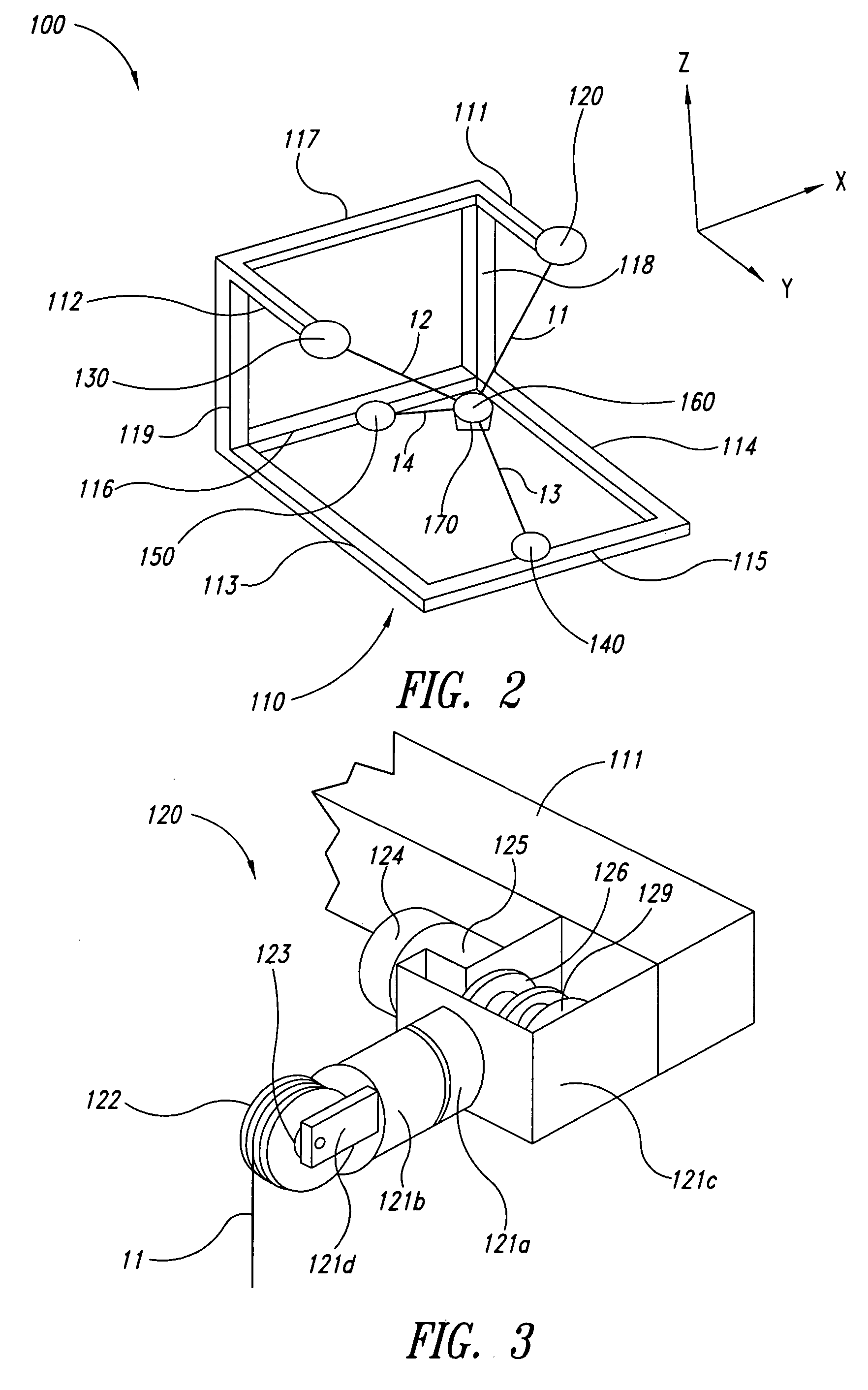Method, apparatus, and article for force feedback based on tension control and tracking through cables
a technology of tension control and force feedback, applied in the field ofhaptic systems employing force feedback, can solve the problems of difficult control of force output, computationally expensive conversion of encoder data, and hard back of the motor
- Summary
- Abstract
- Description
- Claims
- Application Information
AI Technical Summary
Benefits of technology
Problems solved by technology
Method used
Image
Examples
Embodiment Construction
While the system described in Japanese patent 2001-282448, and outlined in the background section of this document, provides significant advantages over the previous art, there are still some problems that remain unaddressed. For example, when calculating the length of each string, error is introduced because a changing spool diameter resulting from string wrapped over itself on the spool is not accounted for; the device calculates rotation based on the length change in eight strings, where a minor error in length variation of one string can substantially affect accuracy (calculation algorithm is not robust about rotation); there is no initialization sequence provided, which is necessary for determining initial string length as required for determining position, orientation and grip, and minimizing associated error; the grip is connected with eight strings, so workspace is limited if the user wishes to avoid tangling the strings; and there is no accounting for extraneous forces resu...
PUM
 Login to View More
Login to View More Abstract
Description
Claims
Application Information
 Login to View More
Login to View More - R&D
- Intellectual Property
- Life Sciences
- Materials
- Tech Scout
- Unparalleled Data Quality
- Higher Quality Content
- 60% Fewer Hallucinations
Browse by: Latest US Patents, China's latest patents, Technical Efficacy Thesaurus, Application Domain, Technology Topic, Popular Technical Reports.
© 2025 PatSnap. All rights reserved.Legal|Privacy policy|Modern Slavery Act Transparency Statement|Sitemap|About US| Contact US: help@patsnap.com



